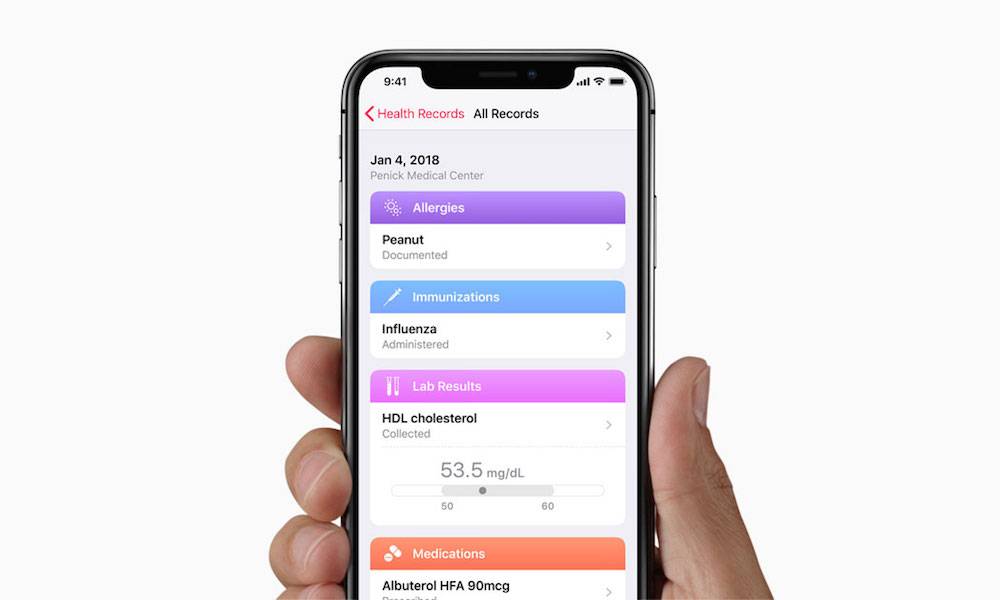Your iPhone Camera Could Soon Measure Your Blood Pressure
 Credit: Apple
Credit: Apple
Toggle Dark Mode
Many of the new high-tech health monitoring features we’re seeing understandably revolve around the Apple Watch, which makes sense considering the wearable nature of the device. However, it’s worth remembering that the iPhone can also still play a valuable role in health care in a variety of ways.
For example, last week we saw a study revealing that Apple’s devices could detect early signs of dementia through behavioural profiling, and now it seems that a team of researchers at the University of Toronto have just discovered a way to accurately measure blood pressure using nothing more than a quick video selfie.
The study, titled Smartphone-Based blood Pressure Measurement Using Transdermal Optical Imaging Technology, was recently published in the American Heart Association’s journal CIrculation: Cardiovascular Imaging, and demonstrated how the technique was used to measure the blood pressure of 1,328 Canadian and Chinese adults simply by capturing two-minute videos of their faces on an iPhone.
The results of the “transdermal optical imaging” technique were compared to readings made with standard blood pressure measuring devices, revealing an accuracy of 95 to 96 percent when measuring three different types of blood pressure.
The lead author of the study, Dr. Kang Lee, is a professor of applied psychology and human development at the Ontario Institute for Studies in Education (OISE) and is the Canada Research Chair in developmental neuroscience. Dr. Lee and his postdoctoral researcher Paul Zheng co-discovered the transdermal optical imaging technology and worked to validate their results alongside researchers from the University of Toronto Faculty of Medicine’s department of physiology and Hangzhou Normal University and Zhejiang Normal University in China.
‘A Happy Accident’
According to the report, the discovery that the iPhone camera could be used to measure blood pressure was “a happy accident” that resulted from efforts by Lee and Zheng to build a contactless lie detector. After realizing the technology could measure blood pressure, Lee changed the direction of his research to instead measure health markers using facial video records.
With lie detectors, it only benefits a very small group. But if I can measure blood pressure, we can benefit a lot of people
Dr. Kang Lee, Professor of Applied Psychology and Human Development, University of Toronto
Lee quickly ldecided that the ability to measure blood pressure was a significantly better use of the technology, since as he notes, it’s “among the key health indexes” that are used to measure a person’s health. Abnormal blood pressure can lead to major health issues such as heart attacks and strokes, which makes it highly beneficial to be able to offer easy access to blood pressure measurements.
How It Works
Facial skin is actually more translucent than most people realize, and transdermal optical imaging takes advantage of this by shining light on the skin to allow the iPhone’s optical sensor to capture reflected red light from a user’s blood hemoglobin, which can then be analyzed to measure blood flow changes under the skin.
From the video captured by the technology, you can see how the blood flows in different parts of the face and through this ebb and flow of blood in the face, you can get a lot of information.
Dr. Kang Lee, Professor of Applied Psychology and Human Development, University of Toronto
Lee has formed a startup company, Nuralogix, to make the technology publicly available through an iPhone app called Anura. The current version of the app provides a rudimentary implementation of the transdermal optical imaging technology that allows users to record a 30-second video of their face and get measurements for stress levels and resting heart rate. Later this year, a version of the app is expected to be released in China that will offer the actual blood pressure measurements, although Lee adds that more research is necessary before they will be ready for a wider release.
For example, the study group thus far hasn’t included users with chronically low blood pressure, nor did it include users with very dark or very fair skin, which could skew the optical measurements. The study is also complicated, Lee notes, due to the fact that those with high or low blood pressure tend to already be taking medication for their conditions, which affects the ability to collect accurate measurements over time from a more representative sample group.
Lee also adds that privacy is of utmost concern, adding that the current version of the app — and future versions — will only extract the actual blood flow data metrics from the video and upload that to the cloud, and not the actual video itself, and that the blood flow data is not associated with a user in any way.
The research team is also hoping to expand the capabilities of the technology to measure other health markers, including blood-glucose levels, hemoglobin, and cholersterol, and Nuralogix plans to eventually monetize the technology by creating an app that would charge a small monthly fee to access more advanced health data. However, it also sounds like another company that is ripe for an acquisition by Apple as part of Tim Cook’s vision to make health technology one of Apple’s greatest contributions to mankind, so it wouldn’t surprise us to find this technology showing up as part of the core iPhone HealthKit experience.






